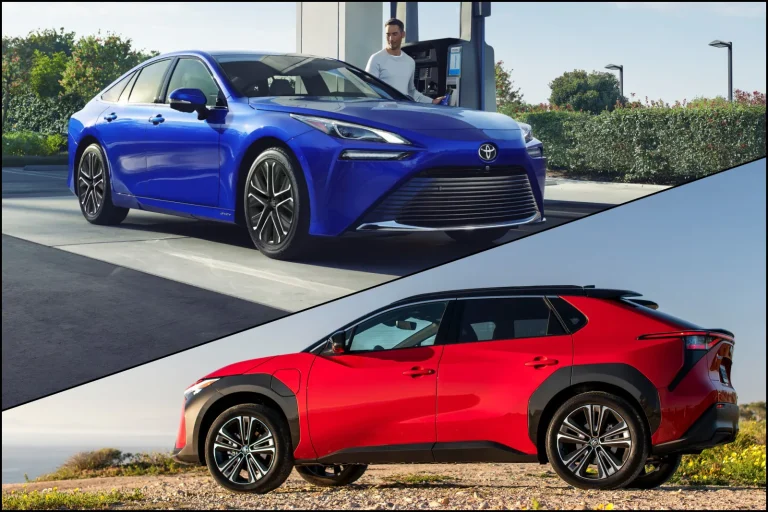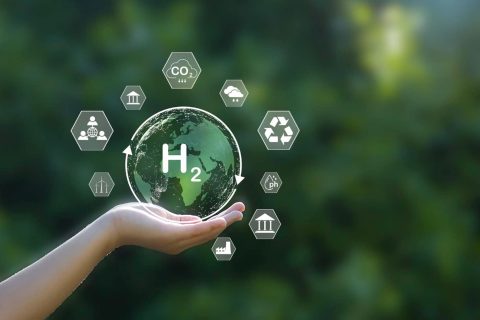Introduction
Electric vehicles have been a topic in headlines, billboards, and dinner-table talks. However, behind the flashy Teslas and charging stations, there is a bigger question that is usually left unasked: Is battery power the only future of zero-emission vehicles?
Step in hydrogen fuel cell technology: a low-profile giant with immense potential. Although clean transportation is mostly thought of in terms of plug-in power, there is another growing path: one that refuels in minutes, goes farther, and leaves only water vapor behind.
So, in this emerging clash of clean mobility titans—Hydrogen vs Electric—which path truly leads us to a zero-emission future? Let’s discover.
Table of Contents
Hydrogen vs. Electric: Who Wins the Clean Transportation Race?
Understanding Hydrogen Vehicles
Hydrogen vehicles, or rather Fuel Cell Electric Vehicles (FCEVs), generate electricity due to a chemical reaction between hydrogen and oxygen in a fuel cell. This electricity powers the motor and in its trail, it only leaves water vapour behind thus making them a truly zero emission option. Contrary to the battery electric cars that require much time to recharge, the FCEVs can be refilled within a period of 3-5minutes, which is like the ordinary cars.
FCEVs are best suited for long-distance travelling and commercial use. Some models have over 400 miles of range when full on tank, this makes them suitable for logistics and heavy transport. Auto giants like Toyota (Mirai) and Hyundai (Nexo) are at the forefront of the green car industry but several nations are developing their hydrogen plants for future use.
Fact Check: According to Allied Market Research, the global hydrogen fuel cell vehicle market was valued at $1.5 billion in 2022 and is projected to reach $57.9 billion by 2032, growing at a CAGR of 43% from 2023 to 2032.
Understand Electric Vehicles
BEVs or battery electric vehicles, are the fully electric vehicles that use a huge lithium-ion battery pack for storing the energy. These batteries are also recharged with sockets or designated recharging stations, and they, in turn, supply power to the electric motor. BEVs are very popular in personal use, urban commutes, and city logistics due to their quiet operation, smooth performance, and low operating cost.
Although charging takes more time (especially with the standard outlets), the global network of public fast charging is being created. Mainstream BEVs such as the Tesla Model 3, Hyundai Kona Electric, and Nissan Leaf are becoming more available and backed by more extensive government incentives and consumer demand.
Fact Check: According to the IEA Global EV Outlook, the global sales of electric cars exceeded 17 million units in the year 2024 and are projected to reach 20 million in the year 2025, representing 20% of all car sales throughout the world—a significant milestone for battery-powered travel.
Advantages of Hydrogen FCEVs Over BEVs
1. Better for Heavy Transport: The energy density of Hydrogen is higher than that of the batteries meaning that vehicles can travel further before they run out of fuel. This makes hydrogen perfect for trucks, buses, trains, and even aircraft, where the weight of batteries becomes a limitation.
2. Quick Refueling: Fuel cell vehicles can be refueled in a mere 3-5 minutes, while BEVs takes much more time to charge. This assists in minimizing downtimes, particularly imperative for fleets of commercial and public transport.
3. Independent of Grid Constraints: As compared to the BEVs, the hydrogen vehicles do not need connectivity with the grid. Hydrogen can be generated off-site and stored, and so it doesn’t increase the strain on over-burdened electricity networks.
4. Cleaner with Renewables: When produced using renewable forms of energy such as wind or solar, green hydrogen becomes a proper clean fuel as it produces no emissions throughout the process.
5. Growing Global Support: Nations such as Germany, Japan, and South Korea are putting a lot of money into hydrogen fuel facilities and technology. The worldwide market for hydrogen vehicles will experience enormous growth over the next ten years.
Future Outlook
The future of clean transportation is not about picking sides; it is about picking what is best where it’s best. Instead of considering hydrogen vs electric in terms of a competition, it might be more realistic to consider them as part of a diverse and changing ecosystem which incorporates both.
- BEVs are appropriate for city environment and small distance as well as personal use.
- By contrast, Fuel Cell Electric Vehicles (FCEVs) enjoy great advantages in long-haul freight, industrial transport, and areas where the charging architecture is lacking or where grid autonomy is of prime importance.
As clean technologies grow and infrastructure builds, the hybrid topography of BEVs and FCEVs is quickly becoming the most realistic and sustainable approach to global decarbonization.
Let’s stop debating and start building the future—where BEVs and FCEVs drive side by side.
What’s your take? Are you team hydrogen, team electric, or team clean energy? Share your thoughts in the comments below.






